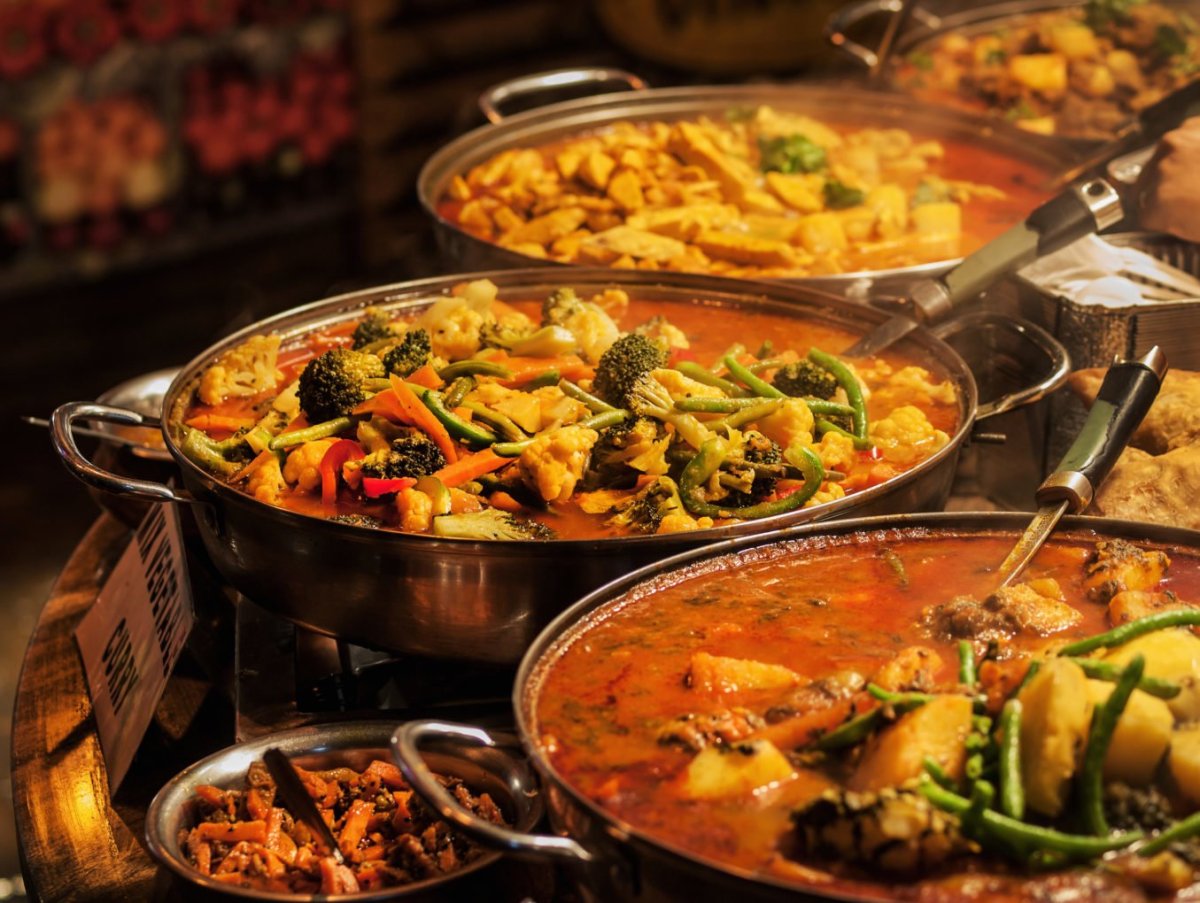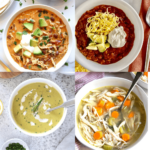Embark on a culinary adventure where the vibrant spices of India meet the satisfying simplicity of the ketogenic diet. Imagine rich, aromatic curries bursting with flavor, yet meticulously crafted to fit your low-carb lifestyle. This exploration unveils the secrets to creating authentic Indian curries that are both delicious and keto-friendly, seamlessly blending traditional techniques with modern dietary needs. Prepare to tantalize your taste buds with a journey through regional variations, innovative ingredient swaps, and expertly crafted recipes.
We’ll delve into the heart of Indian cuisine, uncovering three distinct regional curry profiles – South Indian, North Indian, and beyond – each with its unique spice blend and characteristic flavor profile. Learn how to expertly substitute traditional ingredients with keto-friendly alternatives, maintaining the rich textures and authentic tastes you crave. Step-by-step recipes, accompanied by detailed instructions and nutritional breakdowns, guide you through the process of creating these culinary masterpieces. Finally, discover perfectly paired keto-friendly side dishes to complete your low-carb Indian feast.
Step-by-Step Keto Indian Curry Recipe Creation
This section details the creation of a flavorful and satisfying keto-friendly Indian chicken curry. The recipe emphasizes low-carb ingredients and techniques to maintain a ketogenic diet while enjoying the rich tastes of Indian cuisine. The step-by-step guide ensures a successful outcome, even for novice cooks.
Keto Chicken Curry Recipe
This recipe provides a delicious and satisfying keto-friendly chicken curry, rich in flavor and low in carbohydrates. The careful selection of ingredients and cooking method ensures a balance of taste and adherence to ketogenic principles.
- Ingredients:
- 1.5 lbs boneless, skinless chicken thighs, cut into 1-inch pieces
- 1 large onion, finely chopped
- 2 cloves garlic, minced
- 1 inch ginger, grated
- 1 tbsp coconut oil
- 1 tsp turmeric powder
- 1 tsp cumin powder
- 1 tsp coriander powder
- 1/2 tsp red chili powder (adjust to taste)
- 1/4 tsp garam masala
- 1/2 cup heavy cream
- 1/4 cup chopped cilantro
- Salt to taste
- Optional: 1/2 cup chopped cauliflower florets for added texture and nutrients.
- Sauté Aromatics: Heat coconut oil in a large pan or pot over medium heat. Add the chopped onions and sauté until softened and lightly golden, about 5-7 minutes. This step builds the base flavor of the curry, creating a fragrant foundation.
- Bloom Spices: Add the minced garlic and grated ginger to the pan and sauté for another minute until fragrant. Then, add the turmeric, cumin, coriander, chili powder, and garam masala. Sauté for 30 seconds, stirring constantly, to release the aromatic oils from the spices. This process enhances the curry’s complex flavor profile, preventing the spices from burning and ensuring a balanced taste.
- Cook Chicken: Add the chicken pieces to the pan and cook until browned on all sides. This step ensures the chicken is cooked through and develops a delicious sear, adding depth of flavor. Season with salt.
- Simmer: Pour in 1 cup of water (or chicken broth for richer flavor), bring to a simmer, reduce heat to low, cover, and cook for 15-20 minutes, or until the chicken is cooked through and tender. This slow cooking process allows the flavors to meld and the chicken to become incredibly succulent.
- Creamy Finish: Stir in the heavy cream and chopped cilantro. Simmer for another 2-3 minutes, allowing the sauce to thicken slightly. The heavy cream adds richness and a velvety texture to the curry, balancing the spices and creating a luxurious mouthfeel.
- Serve: Garnish with extra cilantro and serve hot with cauliflower rice or keto-friendly naan bread (if desired). The final touch of fresh cilantro adds a burst of freshness and vibrancy to the dish.
Exploring Keto-Friendly Side Dishes for Indian Curries
Choosing the right side dishes can elevate your keto Indian curry experience, offering a delightful balance of flavors and textures while staying true to your dietary goals. These side dishes not only complement the richness of the curry but also provide essential nutrients and fiber, contributing to a satisfying and well-rounded meal. Below, we explore three keto-friendly options, highlighting their nutritional profiles and providing step-by-step preparation instructions.
Cauliflower Rice
Cauliflower rice offers a light and fluffy alternative to traditional rice, significantly reducing carbohydrate intake. Its mild flavor acts as a blank canvas, absorbing the aromatic spices and flavors of your keto Indian curry. A one-cup serving provides approximately 25 calories and 2 grams of net carbs.
Imagine a pristine white cauliflower head, its florets gleaming under the light. First, you finely chop the cauliflower into small, rice-like pieces using a food processor or a sharp knife. The resulting texture should be granular, resembling grains of rice. Then, heat a tablespoon of ghee or coconut oil in a pan over medium heat. Add the cauliflower rice and sauté for 5-7 minutes, stirring frequently, until it softens slightly and becomes tender-crisp. Season with a pinch of salt, a dash of black pepper, and a squeeze of lime juice for a burst of freshness. The finished product is a delicate, subtly sweet side that perfectly complements the spiciness of the curry.
Keto Naan
Keto naan offers a satisfying substitute for traditional naan bread, delivering a similar texture without the high carbohydrate count. Using almond flour as a base, this recipe creates a soft, slightly chewy bread that can be enjoyed with your favorite keto Indian curry. A single serving (approximately 3 inches in diameter) contains about 150 calories and 5 grams of net carbs.
Picture a small, perfectly formed flatbread, golden brown and speckled with toasted sesame seeds. The preparation begins by combining almond flour, psyllium husk powder, baking powder, salt, and melted coconut oil in a bowl. Slowly add warm water, mixing until a soft dough forms. Roll out small portions of the dough into thin circles. Cook these circles on a lightly oiled skillet or griddle over medium heat for 2-3 minutes per side, until golden brown and slightly puffed. Brush with melted ghee or coconut oil for extra flavor and a shiny finish. The finished keto naan provides a delightful contrast in texture to the creamy curry.
Low-Carb Raita
Low-carb raita offers a refreshing and cooling counterpoint to the richness of the curry. By replacing yogurt with a full-fat alternative, such as coconut cream or Greek yogurt, we drastically reduce the carbohydrate content while maintaining the creamy texture. A typical serving contains about 100 calories and 2 grams of net carbs.
Envision a creamy, white dip, delicately spiced and garnished with fresh herbs. To make this raita, combine full-fat coconut cream or Greek yogurt with finely chopped cucumber, fresh cilantro, and a pinch of cumin powder. A squeeze of lime juice adds a tangy brightness. Mix well and chill for at least 30 minutes to allow the flavors to meld. The result is a vibrant, cooling side that perfectly balances the heat of the curry. The creamy texture contrasts beautifully with the curry’s richness, offering a delightful textural experience.
Tips and Tricks for Keto Indian Cooking Success

Mastering keto-friendly Indian cooking requires understanding how to adapt traditional recipes while maintaining both flavor and nutritional goals. This involves strategic ingredient substitutions and mindful cooking techniques to minimize carbohydrate intake without sacrificing the rich, aromatic experience that defines Indian cuisine. By following these tips, you can create delicious and satisfying keto Indian curries that align perfectly with your dietary needs.
Essential Techniques for Managing Carb Intake
Successfully navigating the ketogenic diet within the context of Indian cuisine hinges on careful ingredient selection and preparation. Many traditional Indian dishes rely heavily on starchy vegetables like potatoes and high-carb ingredients such as chickpeas or lentils. Substituting these with lower-carb alternatives is crucial. For instance, cauliflower rice can replace traditional rice, while coconut flour or almond flour can replace wheat flour in many recipes. The key is to maintain the overall texture and flavor profile of the dish while drastically reducing the net carb count. Using spices generously also helps to compensate for any perceived loss of flavor from omitting higher-carb ingredients.
Flavor Enhancement Strategies for Keto Indian Curries
The vibrant flavors of Indian cuisine are largely dependent on the masterful blend of spices. When adapting recipes for keto, it’s essential to not only replace high-carb ingredients but also to enhance the spice profile to compensate for any potential flavor loss. This can involve using more aromatic spices such as cardamom, cloves, cinnamon, and ginger to create a deeper, richer flavor profile. Furthermore, the judicious use of ghee (clarified butter), coconut oil, or MCT oil can add a depth of flavor and richness that is often found in traditional Indian dishes, without adding unnecessary carbohydrates. Remember that the goal is not just to reduce carbs but to elevate the taste experience.
Common Mistakes to Avoid in Keto Indian Curry Preparation
A common pitfall in keto Indian cooking is neglecting the importance of proper spice blending. Rushing this process can result in uneven flavor distribution and a less-than-satisfying final product. Another mistake is underestimating the impact of added sugars or sweeteners in seemingly innocuous ingredients like pre-made sauces or spice blends. Always check labels carefully and opt for sugar-free alternatives whenever possible. Finally, failing to plan your meals and prepare ingredients in advance can lead to frustration and potentially derail your keto journey. Proper preparation and planning are key to success.
Summary of Tips and Tricks for Keto Indian Cooking Success
- Prioritize Low-Carb Vegetables: Replace high-carb vegetables like potatoes with cauliflower, eggplant, or spinach. These offer similar textures and absorb flavors beautifully, significantly reducing the carb count of your curry.
- Strategic Spice Blending: Don’t be shy with spices! Amplify the flavor profile with generous amounts of cardamom, cinnamon, cloves, cumin, coriander, and turmeric to compensate for omitted high-carb ingredients and create a vibrant, aromatic experience. Proper blending is key to even flavor distribution.
- Healthy Fat Incorporation: Use ghee (clarified butter), coconut oil, or MCT oil to enhance the richness and flavor of your curry. These healthy fats are essential for a ketogenic diet and contribute to a satisfying culinary experience.
- Careful Ingredient Selection: Always check labels for hidden sugars or carbohydrates in pre-made sauces, spice blends, and other ingredients. Opt for sugar-free and low-carb alternatives whenever possible. Planning your meals and prepping ingredients beforehand will streamline the cooking process.
- Embrace Low-Carb Alternatives: Replace traditional rice with cauliflower rice, and use almond flour or coconut flour as substitutes for wheat flour in thickening sauces or making keto-friendly naan bread alternatives. These substitutions maintain the textural appeal while adhering to keto guidelines.
From the fragrant aromas of meticulously blended spices to the satisfying textures of perfectly cooked vegetables and proteins, mastering keto-friendly Indian curries opens a world of culinary possibilities. This guide has equipped you not only with delicious recipes but also with the knowledge to adapt and innovate, creating your own keto-friendly Indian culinary adventures. Embrace the challenge, experiment with flavors, and savor the delicious results of this exciting culinary fusion. The journey to a healthy and flavorful keto lifestyle is now within reach, one delicious curry at a time.
FAQ Section
Can I use coconut milk in keto-friendly Indian curries?
Yes, full-fat coconut milk is a keto-friendly staple and adds richness and creaminess to many Indian curries. Be mindful of the serving size to manage your overall fat intake.
Are all Indian spices keto-friendly?
Most Indian spices are naturally keto-friendly, being very low in carbohydrates. However, always check labels for added sugars or fillers.
How do I store leftover keto Indian curry?
Store leftover curry in an airtight container in the refrigerator for up to 3-4 days. Allow it to cool completely before refrigerating.
Can I make these curries vegetarian or vegan?
Absolutely! Many of these recipes can be easily adapted to be vegetarian or vegan by substituting paneer, tofu, or vegetables for the meat protein.


